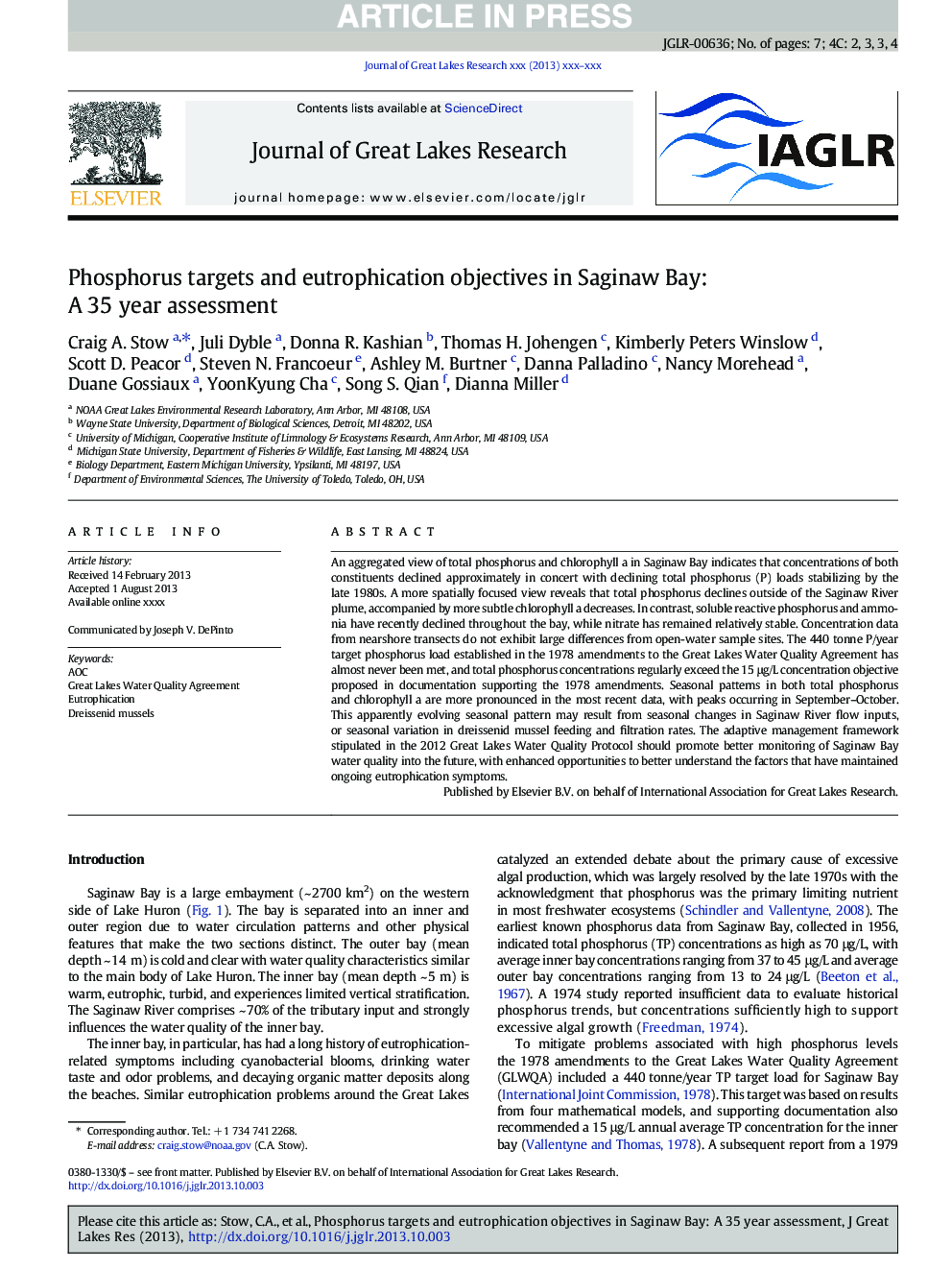| Article ID | Journal | Published Year | Pages | File Type |
|---|---|---|---|---|
| 4398376 | Journal of Great Lakes Research | 2014 | 7 Pages |
Abstract
An aggregated view of total phosphorus and chlorophyll a in Saginaw Bay indicates that concentrations of both constituents declined approximately in concert with declining total phosphorus (P) loads stabilizing by the late 1980s. A more spatially focused view reveals that total phosphorus declines outside of the Saginaw River plume, accompanied by more subtle chlorophyll a decreases. In contrast, soluble reactive phosphorus and ammonia have recently declined throughout the bay, while nitrate has remained relatively stable. Concentration data from nearshore transects do not exhibit large differences from open-water sample sites. The 440 tonne P/year target phosphorus load established in the 1978 amendments to the Great Lakes Water Quality Agreement has almost never been met, and total phosphorus concentrations regularly exceed the 15 μg/L concentration objective proposed in documentation supporting the 1978 amendments. Seasonal patterns in both total phosphorus and chlorophyll a are more pronounced in the most recent data, with peaks occurring in September-October. This apparently evolving seasonal pattern may result from seasonal changes in Saginaw River flow inputs, or seasonal variation in dreissenid mussel feeding and filtration rates. The adaptive management framework stipulated in the 2012 Great Lakes Water Quality Protocol should promote better monitoring of Saginaw Bay water quality into the future, with enhanced opportunities to better understand the factors that have maintained ongoing eutrophication symptoms.
Related Topics
Physical Sciences and Engineering
Earth and Planetary Sciences
Earth and Planetary Sciences (General)
Authors
Craig A. Stow, Juli Dyble, Donna R. Kashian, Thomas H. Johengen, Kimberly Peters Winslow, Scott D. Peacor, Steven N. Francoeur, Ashley M. Burtner, Danna Palladino, Nancy Morehead, Duane Gossiaux, YoonKyung Cha, Song S. Qian, Dianna Miller,
